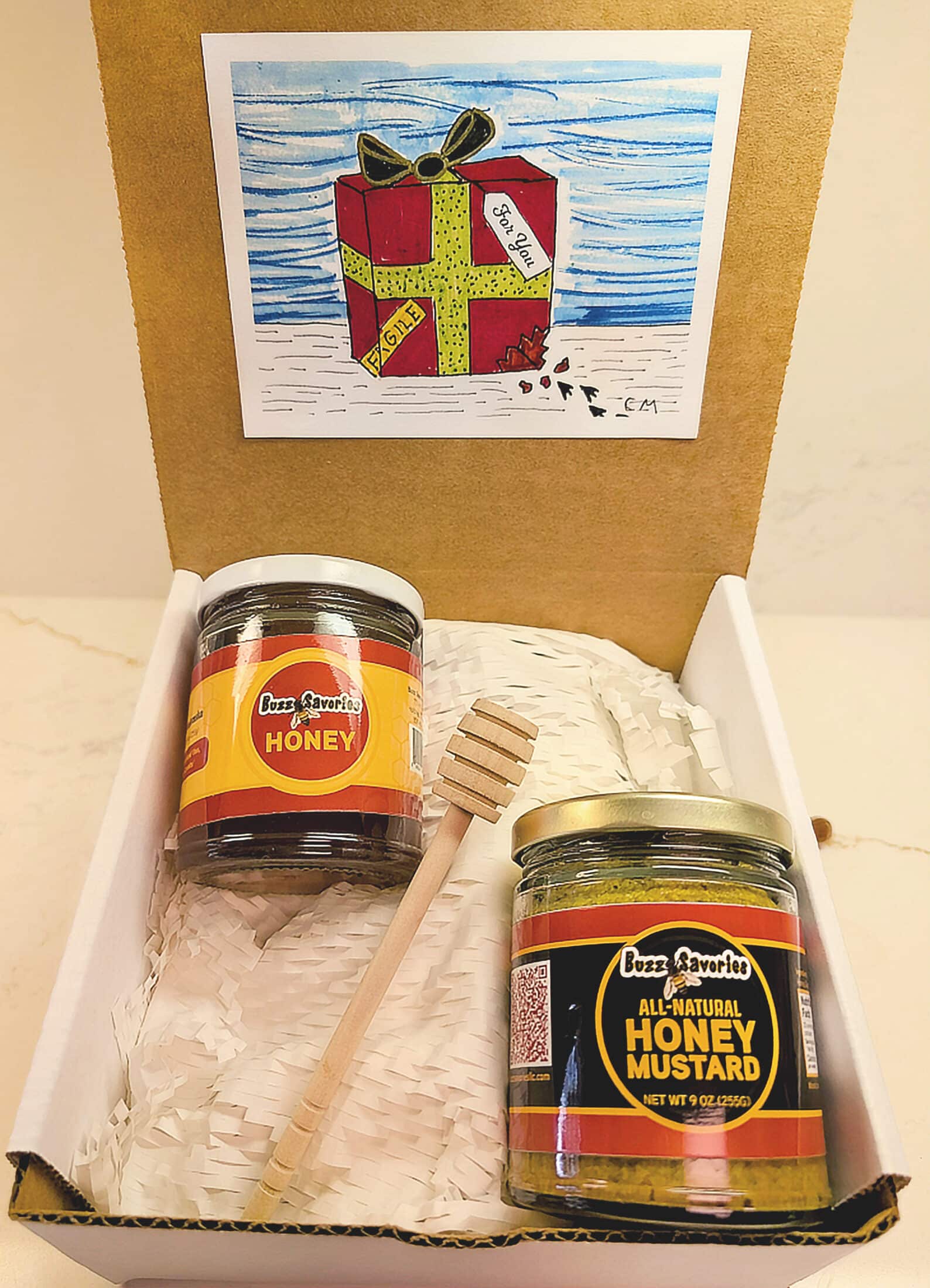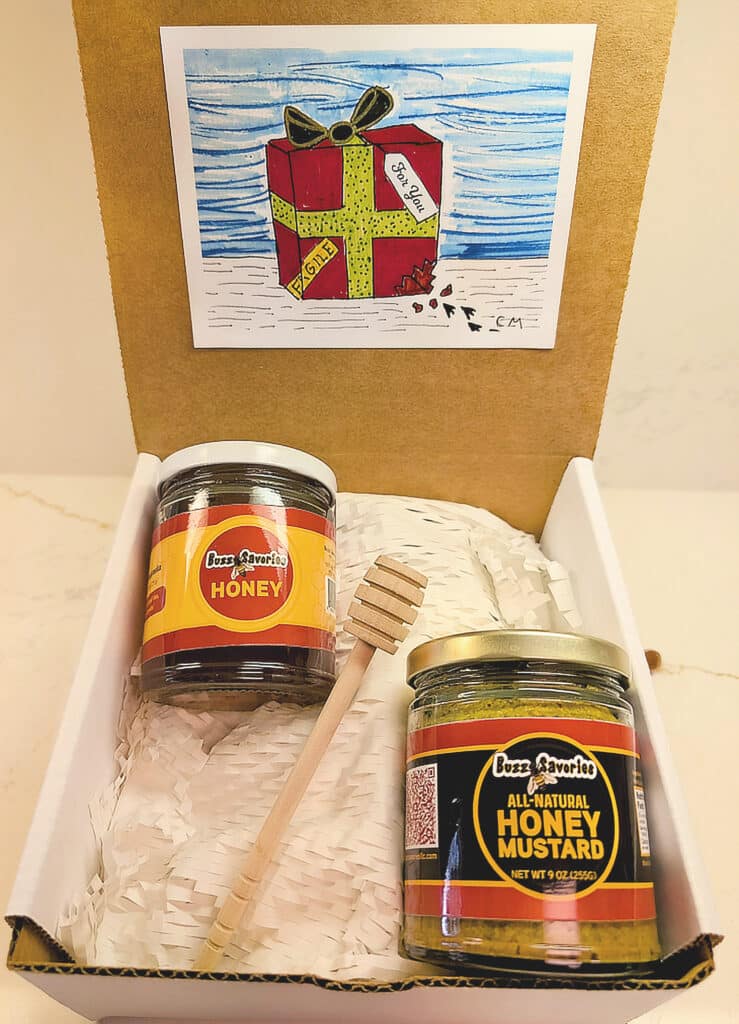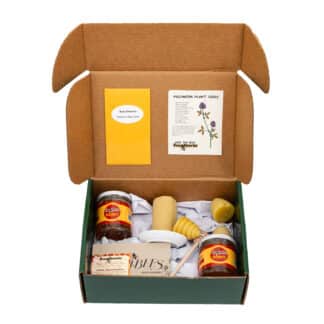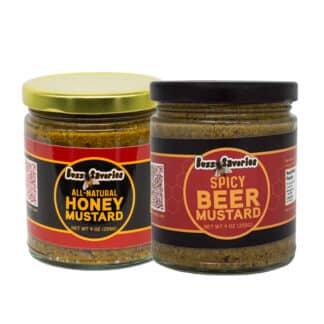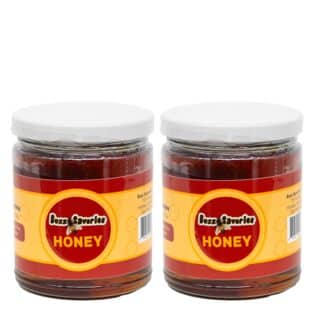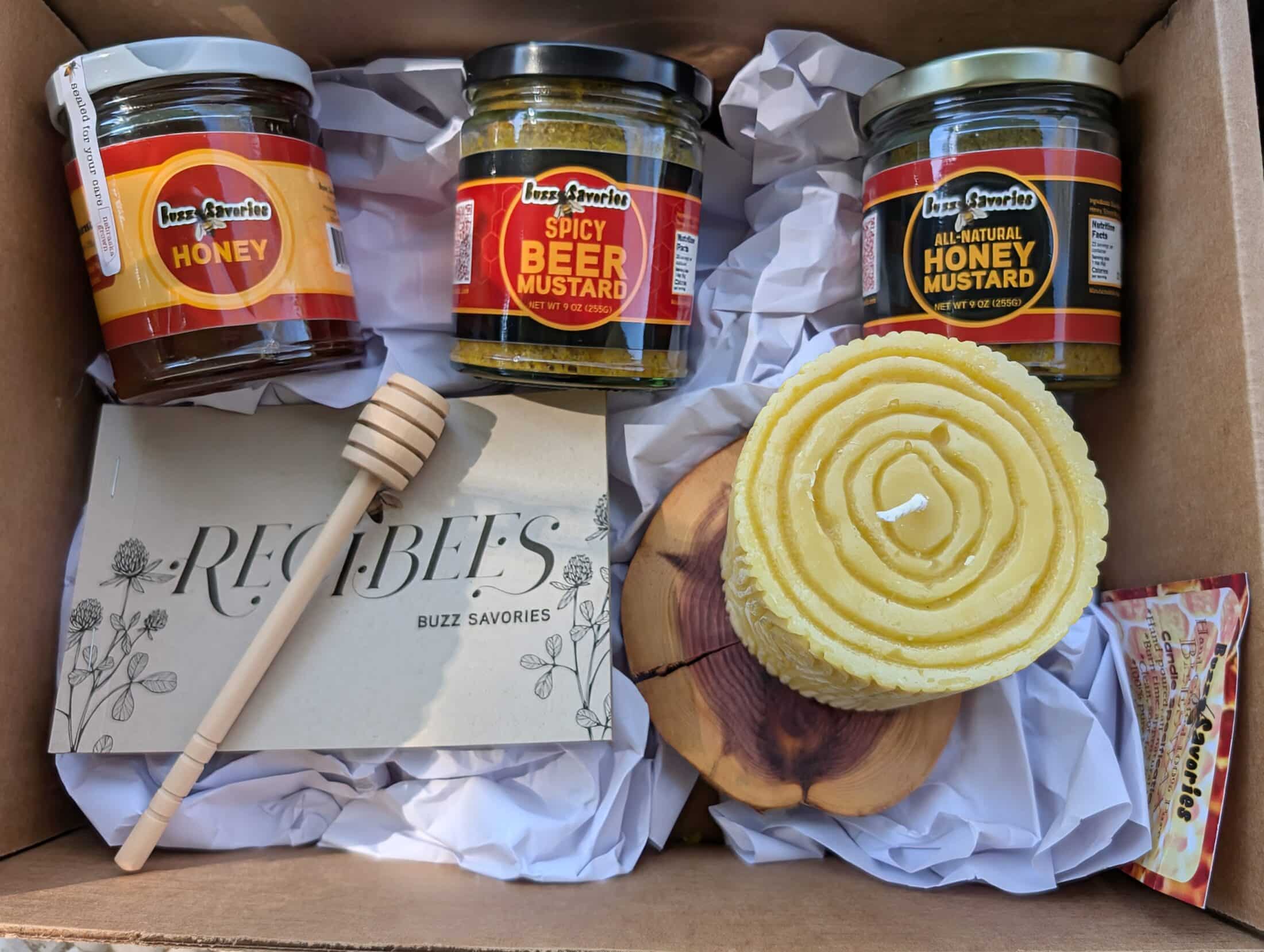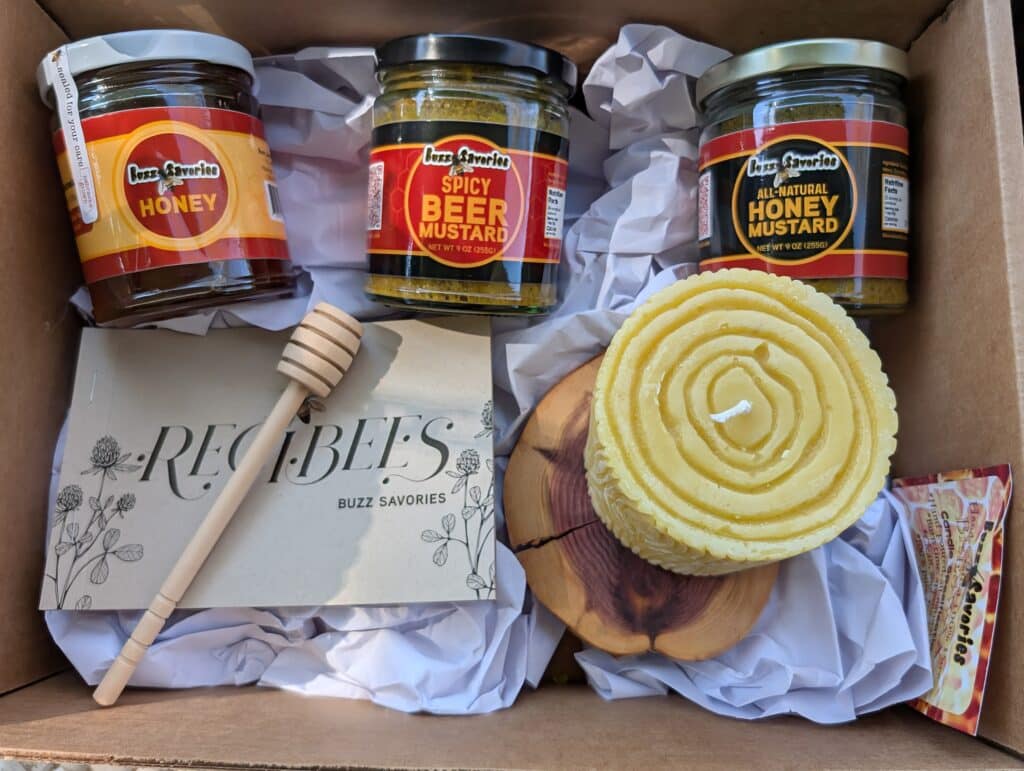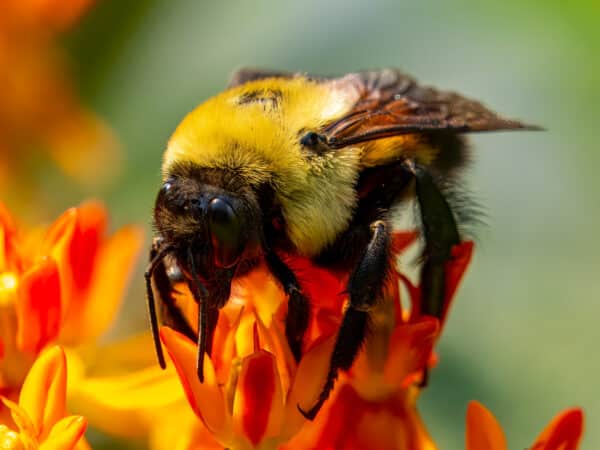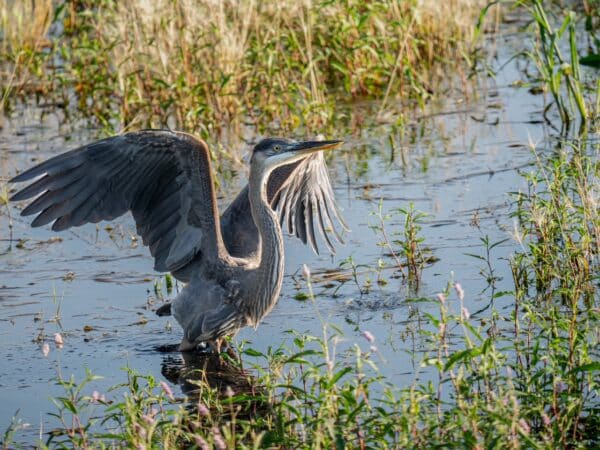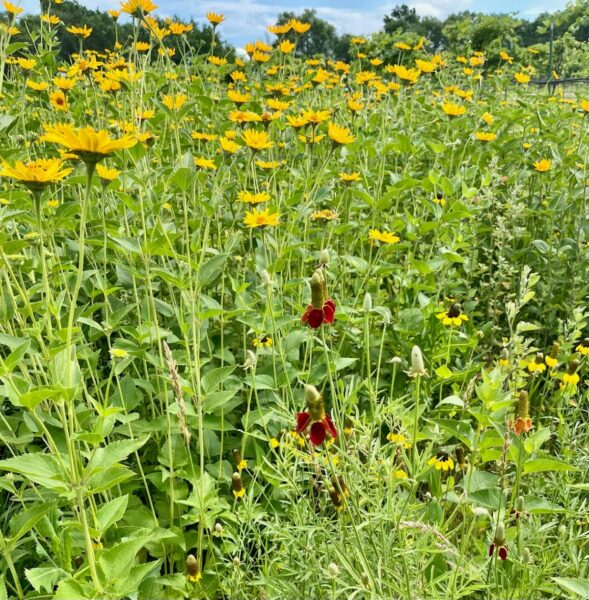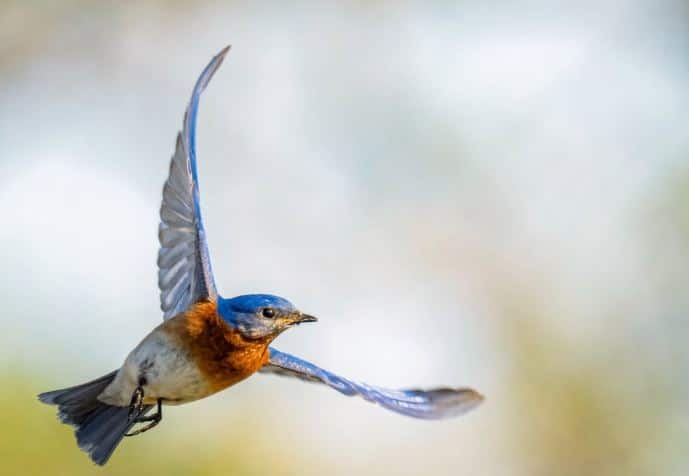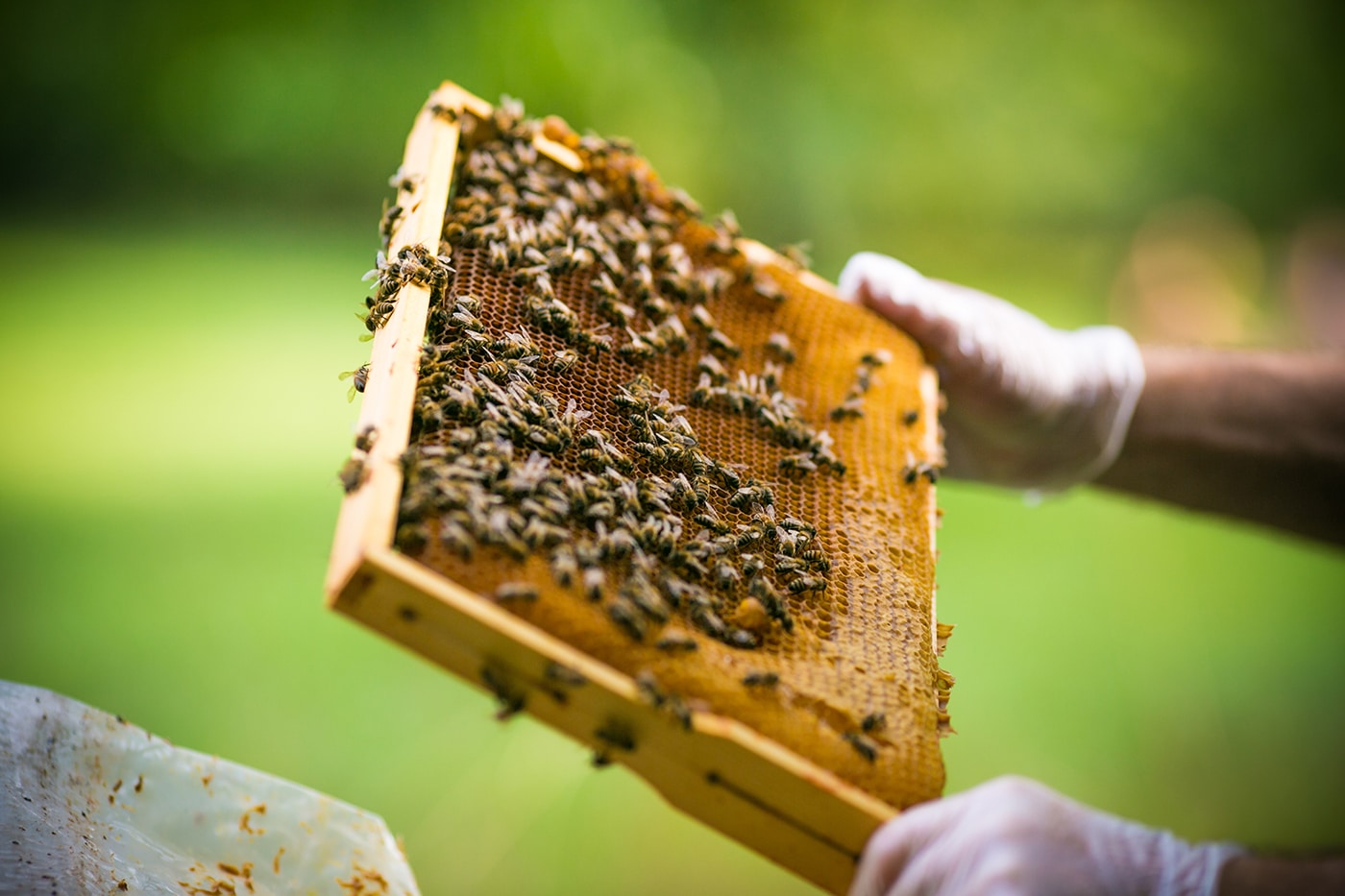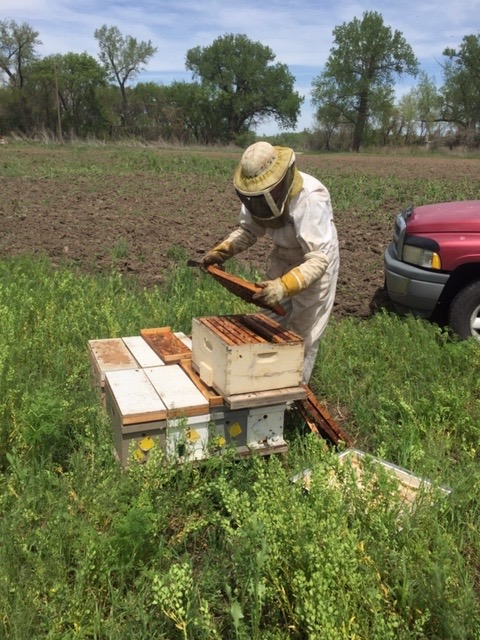October 2025 in Nebraska, and our maple. oak, ash, linden, and cottonwood trees are ditching their load of leaves. Leaves in bronze, ruby, gold and scarlet drift from the heights into fluffy mounds like quilts covering the earth during winter’s blasts of snow and deep freeze.
In October we welcome family and friends to join us in our season to celebrate football and volleyball and Thanksgiving, the Christmas Holidays – the gifting season.
We count on our Makers and Bakers and Designers and Creators at the GROW Nebraska’s Buy Nebraska Store in Kearney, Nebraska to make it easy.
The GROW Nebraska (Buy Nebraska) store in Kearney isn’t just a shop; it’s a treasure chest of locally made goodies. From spicy mustard (yes, that would be Buzz Savories!) to jams, art, books, and chocolates, the shelves are stacked with stories waiting to be wrapped and given.
See below a short list of the Nebraska made products displayed in the Buy Nebraska store (and via their online marketplace):
- Gourmet foods (local specialty foods) Find Buzz Savories all natural products here!
- Handmade soaps & bath products
- Apparel / clothing (shirts, Nebraska-themed wear)
- Jewelry (earrings, necklaces, rings, bracelets)
- Gift items & unique gifts
- Gift baskets, bundles, and customizable gift items
- BBQ / grilling products (related accessories)
- Fine items (higher end artisan goods)
- Husker / Nebraska branded items (neighborhood / state pride goods)
You’ll find gift sets or design your own. See the Buzz Savories Spicy Beer Mustard, Honey Mustard, and Honey and hand-poured beeswax candles and gift sets in the Buy Nebraska story and Buy Nebraska online. Shop any of our products or select from our 3 gift sets here: https://buynebraska.com/collections/buzz-savories-llc?srsltid=AfmBOoofkwXo0H4utuYJVugIis9Lixu5HCa7mXehS2rlLhwlhC1nnfr5
They’ll do the wrapping, packing, and mailing, whether you need a single gift box or a stack of corporate thank-yous.
So skip the panic, ditch the annoying aspects of the gifting season, and spread a little Nebraska-made cheer.
Visit the GROW Nebraska Store in Kearney or shop online at grownebraska.org.
The store is located on the Younes Campus in Kearney, NE (address: 421 W. Talmadge Street, Suite #1)
